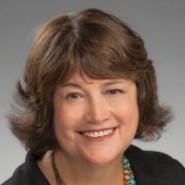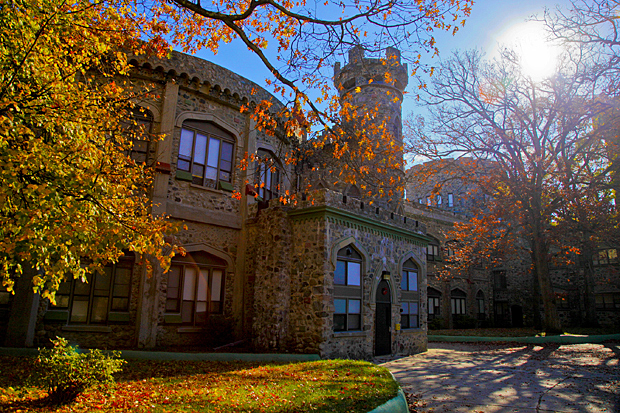 by Brenda Ward
by Brenda Ward
What better place to walk and talk college than in Boston with over 100 institutions of higher education within its environs?
Okay, the weather could have been better (five days of rain!), but the International Educational Consultants Association Conference provided a perfect launching pad for a four-day tour of 10 colleges, from small to large, old to new, liberal arts to specialized.
Here are six of the colleges I visited on my first two days of touring: (I’ll profile more next week):
Wellesley
Even in pouring rain, the wooded Wellesley campus is stunning—all 500 acres of it. It’s a place where women go to learn how to change the world. There are 10 active alumnae for every enrolled Wellesley student, including some names you know–Madeline Albright, Nora Ephron, and Hillary Clinton, for instance. The campus has everything: more than 1,000 courses, 54 majors, renowned faculty, its own art museum, five libraries, state-of-the art scientific equipment, competitive D3 athletic teams, and a 24-hour student center. With Boston’s city center only 12 miles away, Wellesleyans don’t sit at home. They cross-register and co-sponsor clubs at sister college MIT and take engineering and business courses at nearby Olin and Babson. Every application is evaluated by a Board of Admission, which includes a rotating group of faculty and students. Numbers are essential, but applicants must also show commitment, leadership, and community engagement. It’s Wellesley, after all, and it’s about empowering women to make positive change in the world.
Olin School of Engineering
The brochure at Olin claims that it is “revolutionizing engineering education,” and it’s not hyperbole. The college is named for Franklin Olin, a civil engineer, entrepreneur, and professional baseball player. In the mid 1980’s, his namesake foundation set about reforming engineering education by starting a new college that encouraged experimentation, entrepreneurship, and project-based learning. A $460 million commitment along with the purchase of seventy acres (adjacent to Babson College) gave Olin life, and its first freshmen class graduated in 2006. State-of-the art labs are called collaboratories and are open 24 hours. Faculty and “Ninjas” (upper level students) work side-by-side with students in and out of class. The senior year includes a capstone project with a real world challenge: A corporate sponsor supplies the engineering problem; Olin provides the team, and the team provides the solution. This is a place for the true techie and imaginative engineer. With an admit rate of only 11.9%, the 334 Olin students (48% of whom are women) post impressive numbers and look toward equally impressive futures. Every full-time student receives a merit scholarship.
Smith College
Although Smith may look like the quintessential New England college, nestled in a quaint small arts town upon Paradise Pond, it’s a college with a bold mission: Smith empowers young women to be fearless. “Smithies” walk in the footsteps of famous alumni (Gloria Steinem, Rachel Maddow, Tammy Baldwin, Julia Child), but Smith is also nouveau cool—Jimmy Fallon came to campus this year, and the Mendenhall Center for the Performing Arts frequently hosts talent from around the globe. No core curriculum is required, so Smith women can build a curriculum that fits their intellectual quest and fuels their activism. A member of the five-college consortium, many Smith students hop on a bus to take classes at nearby Amherst, Hampshire, Mount Holyoke, and UMass-Amherst. In addition to its renowned arts and sciences, Smith offers a full engineering program, and its graduates often matriculate to graduate engineering programs at nearby MIT and Harvard.
Tufts University
Tufts University gets more popular every year, and it’s not hard to figure out why. Both a research university and a liberal arts college, the campus maintains a vibrant hum with its 5,300 undergraduates and 5,800 graduate and professional students. Tufts describes its undergraduate experience as “transformative,” “inclusive,” and “collaborative,” and many majors are interdisciplinary. Undergraduates choose between the School of Engineering and the School of Arts & Sciences. Students participate in important research: for instance, half of the lab assistants in the Allen Discovery Center are undergraduates. (Tufts hosts one of two Discovery Centers funded by Microsoft’s Paul Allen—the other is at Stanford). Tufts has also just acquired the Museum School of Fine Arts which complements its New England Conservatory Museum School. Tufts’ complete package of opportunities enticed a record of 20,000 applications this year, bringing the admission rate down to 14%, a 10-point drop in the last five years. Tufts is looking for the “interested and interesting” student, one who is exceptionally bright and also kind—the student who demonstrates a connection to the world at large. The majority of applications go to committee, and 40% are admitted through Early Decision.
Brandeis University
Although there is a castle on campus, Brandeis is not ivy-covered red brick. Instead, its eclectic collection of modern buildings speaks of an optimistic present where scientific inquiry, a commitment to social justice, and an appreciation for the arts all thrive on a welcoming, pluralistic campus. Brandeis is young (founded in 1948) and named after Supreme Justice Louis Brandeis, the “people’s attorney.” His presence is still felt on campus. A statue depicts him, judicial roble flying and heading resolutely into the wind, and the athletic teams carry the nickname of “Judges.” Brandeis is also known for its programs in science (the five-story Shapiro Science Center was built in 2009), the arts (think Leonard Bernstein and an outstanding modern art collection), American literature, and history. Three chapels on campus are positioned so that no one building casts its shadow on another, the architectural embodiment of Brandeis’ commitment to acceptance and tolerance. The College of Arts & Sciences is a liberal arts college within a prestigious research university, and many of its majors are interdisciplinary. Admission to Brandeis is a selective process. Students may apply test optional by submitting a graded paper, and most students come from the top 10% of their class. Strong recommendations of character are important along with demonstrated participation in community-oriented programs and out-of-class activities.
Bentley University
At Bentley University, it isn’t business as usual. Its campus may be designed to look like Boston Commons, but its curriculum is high tech modern. Started as the Bentley School of Accounting and Finance in 1917, its present suburban Waltham campus opened in 1968. Bentley, however, faces forward! This is a new millennium business curriculum with a global perspective, integrated liberal arts, and an array of the newest, fastest, coolest hardware/software on the planet. The “Centers” at Bentley communicate the preferred learning style: Consider the Computer Information Sandbox, a collaborative space that supports CIS classes and provides an environment for learning new technologies. Or the Hughey Center for Financial Services with a full trading room with 24 Bloomberg terminals. There’s the Accounting Center for Electronic Learning and Business Measurement as well as the Center for Marketing Technology. At Bentley collaboration and group projects are the norm. This is a place for doers. Admission is competitive with a 46% admission rate and an honors program for top students. A Summer Transition Program is an option for applicants not normally admissible. And Bentley is getting noticed: Bloomberg named it one of the top ten business schools for undergraduates.
Six colleges and two days done. In the next week’s blog: Northeastern University, Boston University, Boston College, and College of the Holy Cross.




